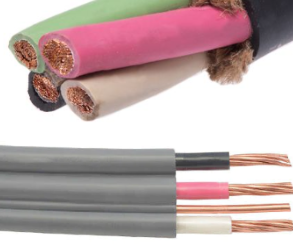Subscribe
Stay updated with our newsletter

For optimal performance and cost-effectiveness in supplying a subpanel in your garage with 60A from a main panel located 210 feet away, the recommended option is to use 2-2-2-4 Aluminum MHF (Mobile Home Feeder). This cable is designed for direct burial but must be in conduit when above ground and inside a building.
| Wire Size | Max Ampacity | Recommended Breaker Size | Voltage Drop Limit |
|---|---|---|---|
| 2-2-2-4 | Up to 90A | 60A | 3% |
Cost-Effective: The 2-2-2-4 Aluminum MHF is reasonably priced at $1.50-$1.60 per foot.
Convenient Sizing: The #2 Aluminum can fit into a 60A breaker, aligning with the intended usage.
The ideal wire sizes for a 60 Amp circuit breaker are 3 AWG aluminum or 4 AWG copper. The 4 AWG copper wire boasts an ampacity of 85 amps at 75°C, while the 3 AWG aluminum wire accommodates 75 amps at the same temperature.
While smaller wires with an ampacity of around 60 Amps might seem feasible, caution is advised. The maximum loading capacity of the electrical circuit should not surpass 80%. For wire runs exceeding 100 feet, it's prudent to size up to counteract voltage drops.
Approximately every 100 feet, there is somewhere around a 20% voltage drop. Necessitating the use of 3 AWG aluminum and 2 AWG copper wires. Sizing up every 100 feet is a rule of thumb.
In most cases, circuit breaker wire runs aren't excessively long. However, sizing up becomes crucial in scenarios where the breaker powers multiple appliances, there's an enhanced current draw, the circuit supports heavy-duty appliances, or it's situated outdoors, susceptible to potential damage.
Comparing the 50 Amp and 60 Amp breakers reveals similar applications. The electric load of the circuit dictates the choice between them. Notably, 60 Amp breakers are less prevalent in residential settings due to standardization concerns; 50-amp and 100-amp breakers dominate home installations.
Stay updated with our newsletter
As an Amazon Associate I earn from qualifying purchases.
We are a participant in the Amazon Services LLC Associates Program, an affiliate advertising program designed to provide a means for us to earn fees by linking to Amazon.com and affiliated sites.